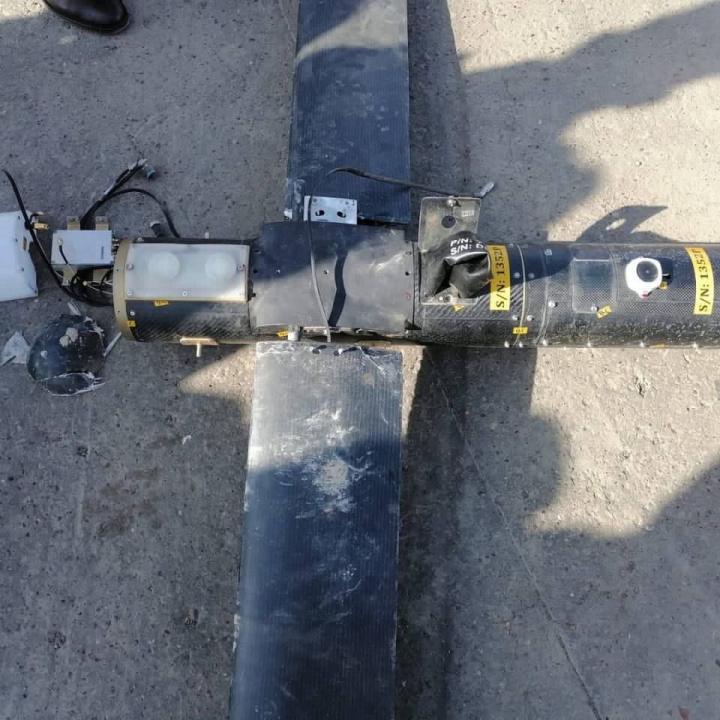
New Options for Iraq's Axis of Resistance Players (Part 1): Attacks on Israel

Nujaba is signaling that it was the key player in nearly twenty strikes on Israel after the "resistance" halted attacks on U.S. bases in February.
Much attention has been lavished on the anti-coalition strikes that Iran-backed Iraqi militias have undertaken at home and next door in Syria and Jordan. Yet these groups have also run a parallel strike campaign against Israel since the outbreak of the Gaza war last October.
These incidents have been far more difficult to verify, whether at launch or upon impact in or on the way to Israel. By Militia Spotlight's count, groups within the Islamic Resistance in Iraq (IRI) umbrella brand have claimed 40 attacks on Israel since the first such incident: a November 2 strike against an unspecified target "on the Dead Sea.” That same day, an Iranian-made Quds cruise missile was photographed in the Jordanian desert after crashing or being intercepted. In one of the latest attacks, on April 1, a cruise missile was apparently launched from Iraq toward a naval base in Eilat where Israel’s nuclear-armed submarines are maintained.
Targets and Weapons
IRI’s Israel strikes have been a highly distinctive subset in Militia Spotlight's attack tracker from the beginning. The specific aimpoints have frequently been poorly defined, described with phrases such as “military target,” “critical target,” or “intelligence target.” In total, these claims involve sixteen locations, with the only recurring ones being Eilat (9 attacks), Golan (7), Haifa (6), and Ben Gurion Airport (2). In March, the IRI claimed attacks on a greatly expanded range of targets, including at least seven small airports and military airbases in Israel.
The language used to describe weapons systems has also been vaguer than that used for Iraq/Syria strikes, with the phrase “suitable (or appropriate) weapons” appearing in about a quarter of the Israel claims. In the case of Iraq/Syria strikes, this phrase has often coincided with the use of special weapons such as al-Aqsa 1 close-range ballistic missiles, antiaircraft missiles, or Quds-series cruise missiles. On two occasions—January 7 and 16—IRI claimed to use al-Arqab cruise missiles (part of the Quds series) against Israel (Figure 1). Around three-quarters of the claimed Israel attacks have involved unspecified drones. Shahed-101 X-tail one-way attack drones have appeared in attendant imagery, showing a mix of night and daylight launches that cannot be definitively tied to the claimed strikes.
As Table 1 notes, the number of attacks has fluctuated but is generally surging. In the latter half of February, following effective U.S. deterrent strikes in Iraq, IRI groups seemed to halt most of their operations. They resumed attacks in March, but only against Israel.
April 1 Attack on Eilat
The April 1 strike appears to have been launched out of central or southern Iraq. It may have involved another Quds-series cruise missile, which have repeatedly been observed launching from central Iraq in recent months; notably, the IRI used the “suitable weapons” phrasing for this strike. The weapon likely approached Israel on a lesser-known route, perhaps along the Iraq-Saudi border and across southern Jordan, approaching Eilat from the east. The specific target appears to have been an Israeli Navy facility where corvettes are berthed and submarines are reportedly maintained.
Social media messaging indicates that the militia Harakat Hezbollah al-Nujaba is signaling its responsibility for the Eilat attack and others like it. The Jihad Brothers Team, a Telegram channel affiliated with Nujaba, often has prior and/or exclusive information about these attacks. Interestingly, Sabereen News, which is increasingly under the influence of the militia Kataib Hezbollah, stopped posting about the attacks after KH secretary-general Abu Hussein al-Hamidawi announced the suspension of "resistance" attacks in late January. (Part 2 of this analysis focuses on KH's next moves, which may be focused on opening a new front in Jordan.)
Additionally, influential personalities linked to the muqawama (resistance) have identified Nujaba as the group that launched the Eilat attack. For example, Abbas Shamsuddin, a muqawama-linked historian and media personality, posted the following on his X/Twitter account: “Nujaba burned Eilat with three advanced drones that bypassed Jordanian-Israeli radars and air defenses and reached the specified targets” (Figure 2).
In Militia Spotlight's view, Nujaba and the U.S.-designated group Kataib Sayyid al-Shuhada (KSS), are the primary or sole IRI members still launching drones at Israel since February. This arrangement underlines how KSS is primarily committed to transnational muqawama activities rather than domestic power accumulation in Iraq, and how closely it is tied to Iran's Islamic Revolutionary Guard Corps, which has provided long-range strike systems. On January 24, KSS leader Abu Ala al-Walai (real name Hashim Bunyan al-Siraji), posted a statement announcing the start of the second phase of Iraqi muqawama operations in solidarity with the Gaza war. His phrasing indicated that these operations will focus on remotely striking Israeli ports and other strategic facilities.






